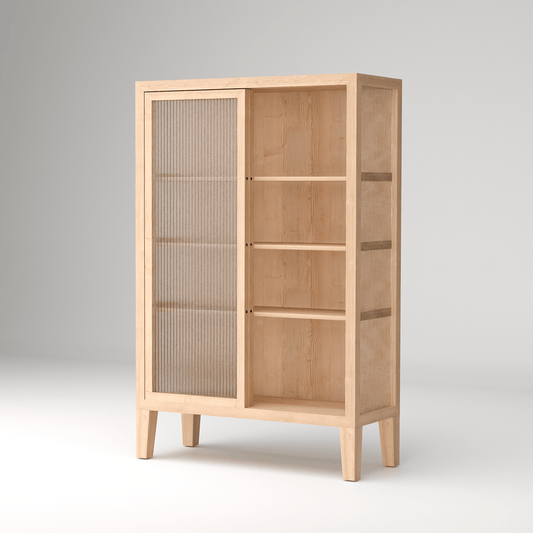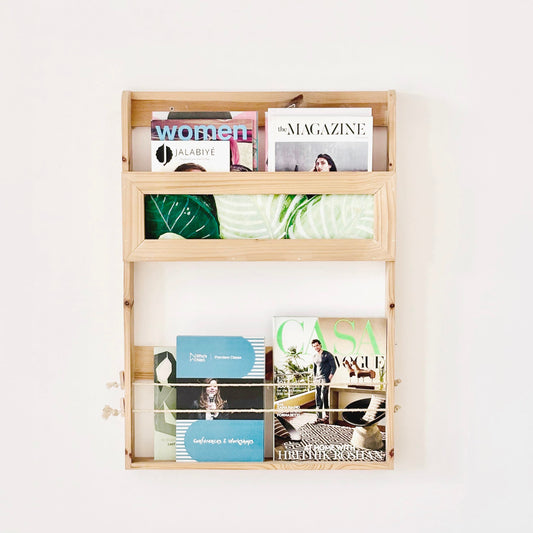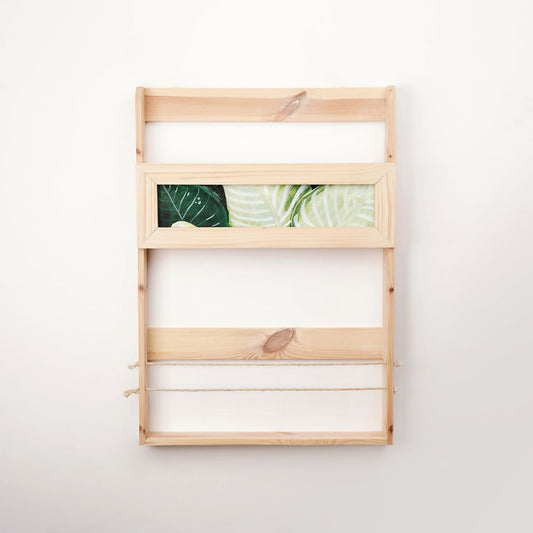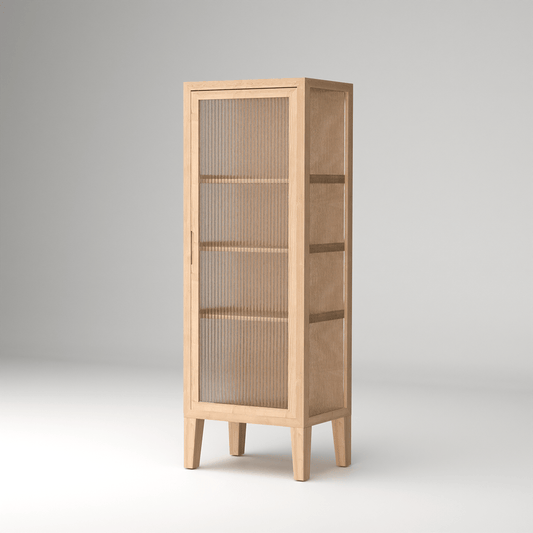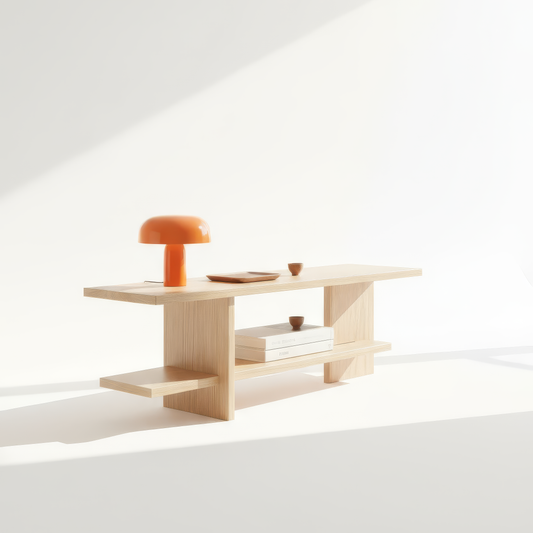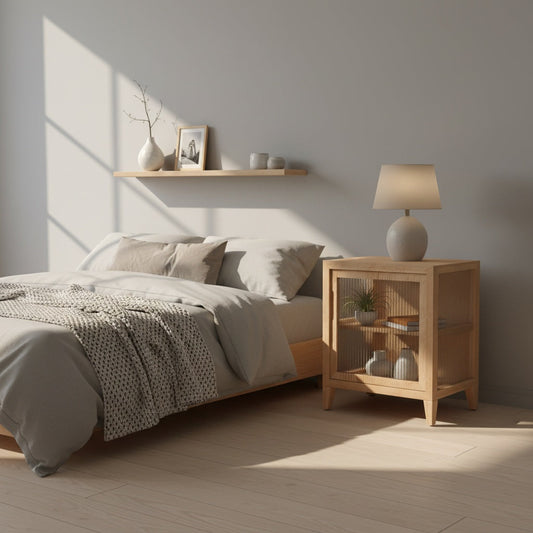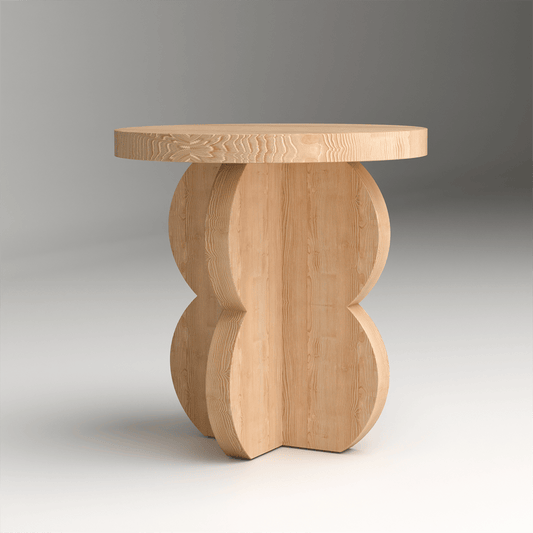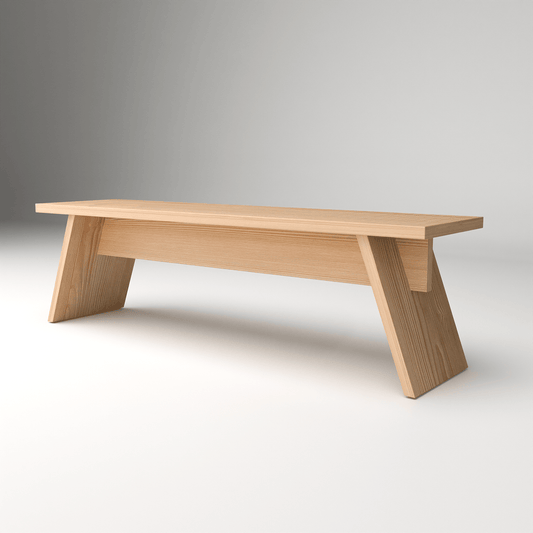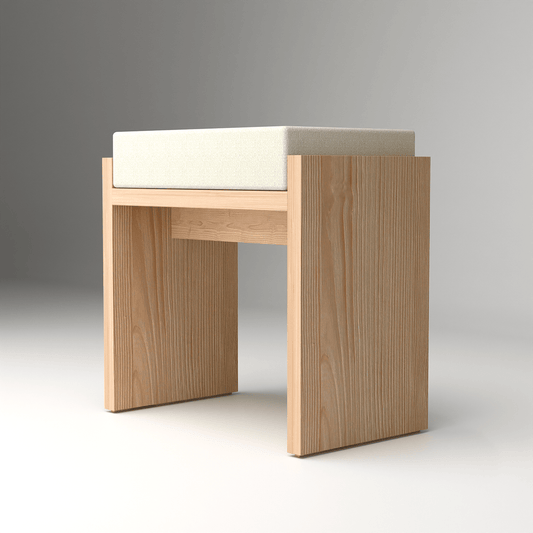Scandinavian interior design has evolved dramatically as we enter 2025, transforming from its traditional stark minimalism into a more nuanced, comfort-driven aesthetic that prioritizes human well-being alongside visual appeal. This comprehensive guide explores the most significant trends reshaping Nordic interiors, offering practical insights for creating spaces that embody the perfect balance of beauty, functionality, and emotional comfort.
At A Good Life, we've been at the forefront of this evolution, crafting sustainable pine wood furniture that reflects these emerging trends while honoring the timeless principles that make Scandinavian design so enduringly popular. Let's dive deep into the trends that are defining 2025 and beyond.
Understanding the 2025 Scandinavian Design Philosophy
The core philosophy of Scandinavian design remains unchanged: create beautiful, functional spaces that enhance daily life. However, 2025 brings a more sophisticated understanding of what this means in practice.
The New Nordic Mindset
Modern Scandinavian design recognizes that minimalism shouldn't mean sacrificing comfort or personality. Instead, it's about thoughtful curation—choosing pieces that serve multiple purposes while bringing joy and tranquility to your space.
Key philosophical shifts include:
-
Comfort as a design priority, not an afterthought
-
Sustainability as a non-negotiable element
-
Personalization within minimalist frameworks
-
Technology integration that enhances rather than dominates
-
Wellness-focused design decisions
Trend 1: Warm Minimalism Takes Center Stage
The stark, cold minimalism of previous decades has given way to "warm minimalism"—spaces that maintain clean lines while embracing comfort and emotional warmth.
Characteristics of Warm Minimalism:
-
Natural wood tones instead of painted or bleached finishes
-
Soft, rounded edges on furniture pieces
-
Layered textures in neutral color palettes
-
Comfortable seating that invites relaxation
-
Ambient lighting that creates atmosphere
Implementing Warm Minimalism:
Start with furniture pieces that embody this philosophy. Our Minimalist Quiet Nightstand in Solid Pinewoodperfectly exemplifies warm minimalism, featuring clean lines softened by the natural warmth of pine wood and thoughtful proportions that create visual calm while providing essential bedside functionality.
Trend 2: Sustainable Materials Revolution
Sustainability has moved from trend to requirement in 2025 Scandinavian design. Consumers demand transparency about materials, production methods, and environmental impact.
The Sustainability Imperative:
-
Reclaimed and recycled materials gain prominence
-
Local sourcing reduces environmental impact
-
Durable construction that lasts generations
-
Zero-waste production methods become standard
-
Biodegradable finishes replace synthetic alternatives
Material Preferences for 2025:
-
Pine wood for its sustainability and natural beauty
-
Reclaimed timber with visible character marks
-
Natural stone for accent pieces
-
Organic textiles in neutral tones
-
Recycled metals for hardware and fixtures
Trend 3: Biophilic Design Integration
The connection between indoor and outdoor spaces becomes more intentional, with biophilic design principles deeply woven into Scandinavian interiors.
Biophilic Elements in Nordic Design:
-
Natural wood grain patterns left visible and celebrated
-
Organic shapes that mirror forms found in nature
-
Living plants integrated as design elements
-
Natural light maximization through strategic placement
-
Earth-tone color palettes that ground the space
Creating Biophilic Connections:
Incorporate furniture that celebrates natural materials and forms. Consider pieces that showcase wood grain, feature organic curves, or provide platforms for displaying plants and natural objects.
Trend 4: Multifunctional Design Excellence
Space efficiency remains crucial, but 2025 brings more sophisticated multifunctional solutions that don't compromise on aesthetics.
Smart Multifunctional Features:
-
Hidden storage compartments in unexpected places
-
Transformable furniture that adapts to different needs
-
Modular systems that grow with your lifestyle
-
Integrated technology that remains invisible
-
Dual-purpose surfaces that maximize utility
For home organization that embodies this trend, our Minimalist Pine Pantry Storage Box Set offers elegant kitchen organization while maintaining the clean aesthetic that defines modern Scandinavian design. These handcrafted boxes provide essential storage while adding natural warmth to kitchen spaces.
Trend 5: Color Psychology in Nordic Interiors
2025 Scandinavian color palettes are carefully curated to support psychological well-being and emotional comfort.
The New Nordic Color Story:
-
Warm whites replace stark, clinical whites
-
Honey and amber wood tones over bleached finishes
-
Soft sage greens that connect to nature
-
Muted terracotta that adds earthiness
-
Gentle grays that promote calm and focus
Color Application Strategies:
-
Use color to define zones within open spaces
-
Layer different tones of the same color family
-
Introduce color through natural materials rather than paint
-
Balance warm and cool tones for visual harmony
-
Consider the psychological impact of color choices
Trend 6: Textural Storytelling
Texture becomes a primary tool for adding visual interest and emotional depth to minimalist spaces.
Texture Layering Techniques:
-
Contrast smooth and rough surfaces for visual interest
-
Mix matte and subtle sheen finishes thoughtfully
-
Celebrate natural imperfections in wood and stone
-
Layer different textile weights for comfort
-
Incorporate handmade elements for authenticity
Textural Hierarchy:
Create a textural hierarchy that guides the eye and creates focal points while maintaining overall harmony. Start with larger furniture pieces as your textural foundation, then layer in accessories and textiles.
Trend 7: Lighting as Emotional Design
Lighting design in 2025 focuses on creating emotional atmospheres that support different activities and moods throughout the day.
Lighting Strategy Elements:
-
Multiple light sources at different levels
-
Warm color temperatures for evening relaxation
-
Natural light optimization during daylight hours
-
Dimmable systems for mood adjustment
-
Sculptural fixtures that serve as art pieces
Lighting Zones:
Create distinct lighting zones for different activities: bright, focused light for work areas; soft, ambient light for relaxation; and accent lighting to highlight architectural features or artwork.
Trend 8: Digital Wellness Integration
2025 Scandinavian design thoughtfully addresses our relationship with technology, creating spaces that support digital wellness.
Digital Wellness Features:
-
Designated tech-free zones for mental restoration
-
Hidden cable management that maintains clean aesthetics
-
Charging stations integrated into furniture design
-
Blue light filtering in evening lighting systems
-
Analog elements that encourage offline activities
Creating Digital Balance:
Design spaces that support both connected and disconnected living. Provide convenient access to technology when needed, but also create inviting spaces that encourage face-to-face interaction and quiet contemplation.
Trend 9: Artisanal Craftsmanship Revival
Handcrafted elements gain prominence as people seek authentic, meaningful pieces that connect them to traditional skills and human creativity.
Artisanal Design Elements:
-
Visible tool marks that tell the maker's story
-
Natural wood variations celebrated rather than hidden
-
Traditional joinery techniques in furniture construction
-
Hand-finished surfaces with subtle irregularities
-
Local craftsperson collaborations that support communities
Investing in Craftsmanship:
Choose pieces that showcase skilled craftsmanship and will develop character over time. Look for furniture that celebrates the maker's hand and uses traditional techniques that ensure longevity.
Trend 10: Wellness-Centered Spatial Planning
Room layouts and furniture placement prioritize physical and mental wellness, creating spaces that actively support healthy living.
Wellness Design Principles:
-
Clear pathways that encourage movement
-
Natural light access from multiple seating areas
-
Air circulation considerations in furniture placement
-
Ergonomic seating that supports good posture
-
Quiet zones for meditation and reflection
Creating Wellness Zones:
Designate specific areas for different wellness activities: a reading nook with excellent natural light, a meditation corner with minimal distractions, or a workspace that promotes good posture and focus.
Implementing 2025 Scandinavian Design Trends
Successfully incorporating these trends requires a strategic approach that considers your lifestyle, space constraints, and personal preferences.
Getting Started:
-
Assess your current space and identify areas for improvement
-
Choose one or two trends to focus on initially
-
Invest in quality pieces that embody multiple trends
-
Plan for gradual implementation rather than complete overhauls
-
Consider professional consultation for major changes
Budget-Conscious Approaches:
-
Start with accessories and textiles to introduce new trends
-
Focus on lighting changes for immediate impact
-
Rearrange existing furniture to improve flow and function
-
Add plants and natural elements for biophilic benefits
-
Choose versatile pieces that serve multiple functions
The Future of Scandinavian Design
As we look beyond 2025, several emerging themes suggest the continued evolution of Scandinavian design:
Emerging Directions:
-
Climate-responsive design that adapts to environmental changes
-
Intergenerational spaces that serve multiple age groups
-
Community-centered design that encourages social connection
-
Adaptive reuse of existing furniture and materials
-
Wellness technology integration that remains invisible
Measuring Design Success
How do you know if your 2025 Scandinavian design implementation is successful? Look for these indicators:
Success Metrics:
-
Increased time spent at home by choice rather than necessity
-
Improved sleep quality in redesigned bedroom spaces
-
Enhanced productivity in work areas
-
Greater sense of calm throughout your living space
-
Positive feedback from guests about the atmosphere
Maintenance and Evolution
2025 Scandinavian design recognizes that spaces should evolve with their inhabitants while maintaining their core aesthetic principles.
Maintenance Strategies:
-
Regular decluttering to maintain minimalist principles
-
Seasonal adjustments in textiles and accessories
-
Furniture care that preserves natural materials
-
Lighting adjustments for changing daylight patterns
-
Plant care that maintains biophilic connections
The ultimate guide to 2025 Scandinavian interior design reveals a movement that has matured beyond simple minimalism into a sophisticated approach to creating spaces that truly support human flourishing. By embracing comfort, sustainability, and wellness while maintaining the clean aesthetic that defines Nordic design, these trends offer a roadmap for creating homes that are both beautiful and deeply functional.
As these trends continue to evolve, the core principle remains constant: design should serve life, not the other way around. By thoughtfully implementing these trends, you can create spaces that not only look beautiful but actively contribute to your well-being and quality of life.


